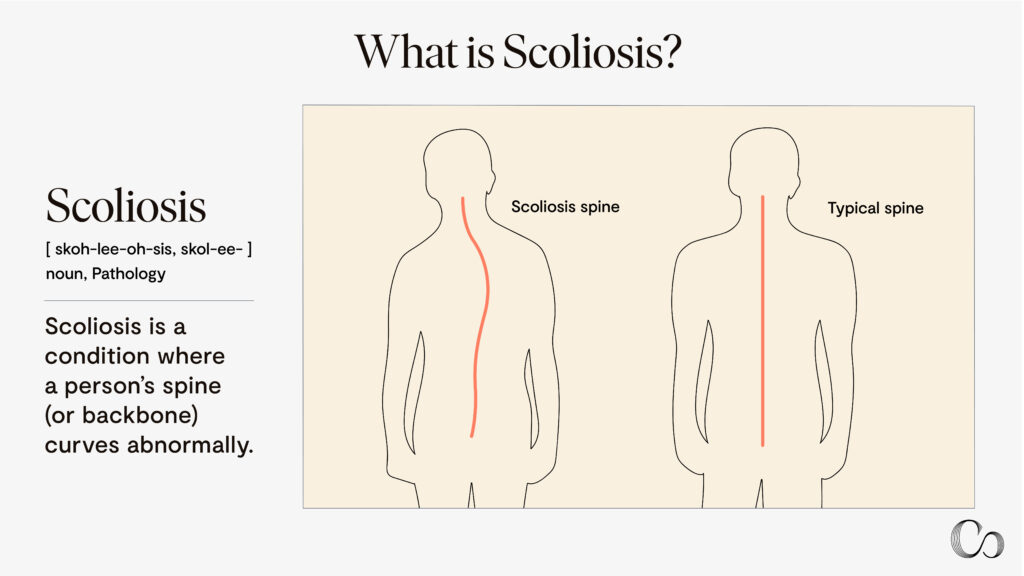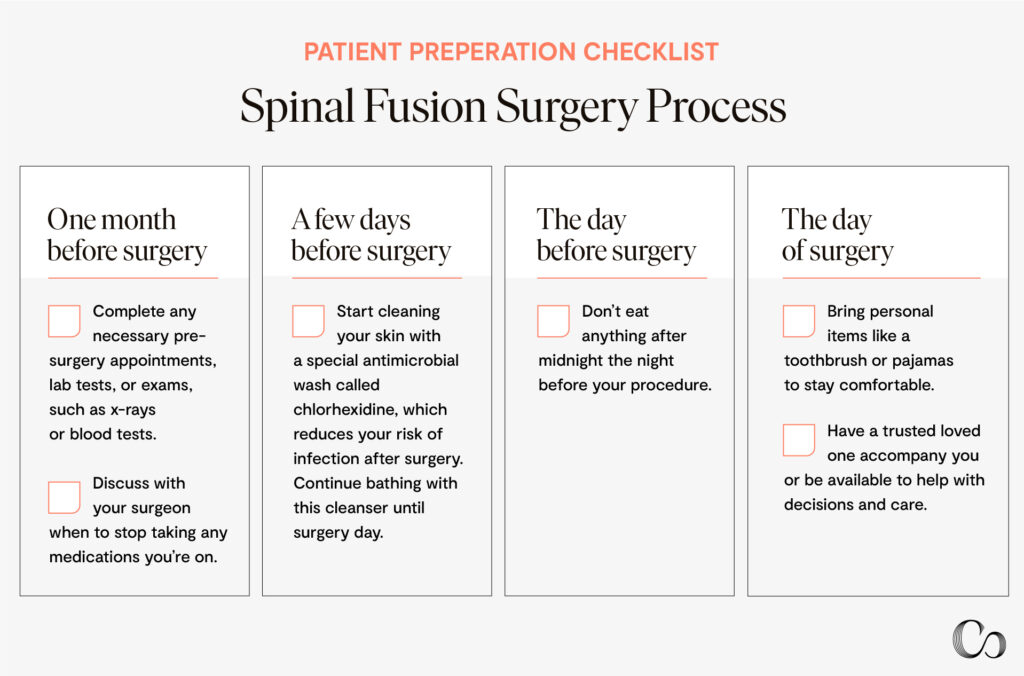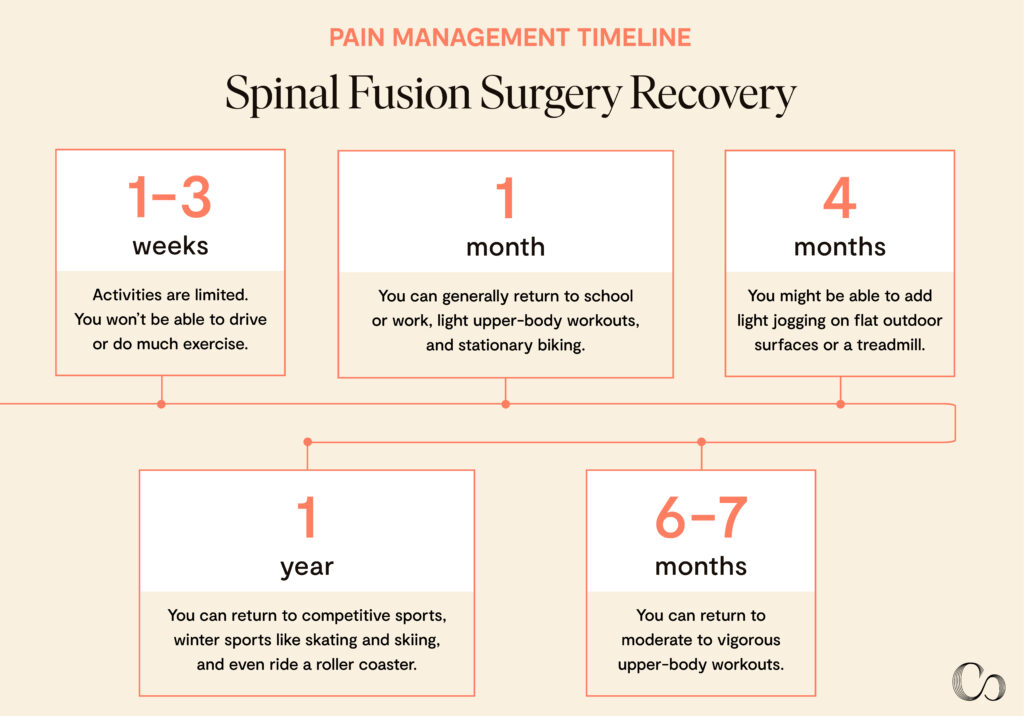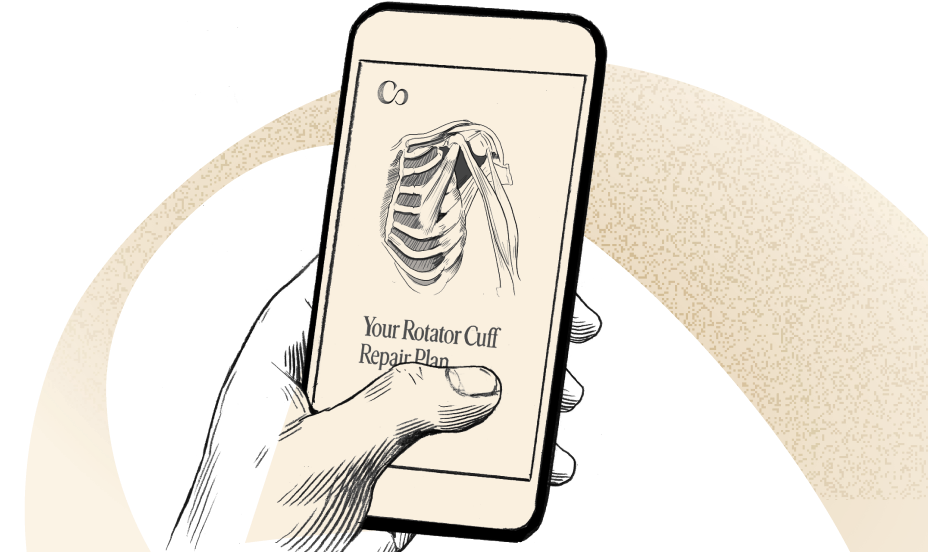The Patient’s Guide To Scoliosis Surgery
Scoliosis surgery can help correct a severe curve in the spine and ease uncomfortable symptoms, but it’s not for everyone.
Scoliosis, or an abnormal curve in your spine, can cause back pain or issues with your posture or movement that make it challenging to get through the day. To receive scoliosis pain relief, surgeons may recommend scoliosis surgery. However, scoliosis surgery is not without risks. So how do you weigh the pros and cons of such a major medical procedure?
First, you’ll need to have thorough discussions with your doctor to determine if you’re a good candidate for surgery. And it can’t hurt to gather a little information on your own, too. In this article, you’ll learn everything you need to know about scoliosis surgery, including details on how it helps straighten the spine, what surgery prep and recovery are like, and how to find a top-caliber spine surgeon to treat you.
So, What is Scoliosis?
Scoliosis is a condition where a person’s spine (or backbone) curves abnormally.
“Normally, our spines are straight when viewed from the back, but if someone has scoliosis, their spine looks more like an ‘S’ or a ‘C’ shape,” says Nathan J. Lee, MD, a spine surgeon at Midwest Orthopaedics and an assistant professor in the department of orthopedic surgery at Rush University Medical Center.
This curve can be mild or severe. When it’s mild, you might not need any treatment. But severe scoliosis can be challenging for your day-to-day life. It can dramatically change your posture, contribute to serious back or rib pain, or even cause pressure on your lungs or ribs in ways that make it hard to breathe.

Causes
Frustratingly, doctors usually don’t always know why scoliosis develops. When the cause of the scoliosis is unknown, it’s called idiopathic scoliosis. Sometimes, you’re born with it. Other times, scoliosis develops in childhood or after an injury or disease, like a spine injury or a neuromuscular disease like cerebral palsy.
Other possible causes and risk factors that may lead to scoliosis include:
- Genetics
- Hormone changes, such as the sudden rise in human growth hormone during growth spurts in adolescence
- Changes in cellular structure
- In utero development
- Genetic diseases, such as Marfan syndrome and Andersen-Tawil syndrome
- Spine injuries
- Nerve- and muscle-related diseases, like cerebral palsy, spina bifida, and muscular dystrophy
- Tumors that cause changes to the spine
Symptoms
It’s common for scoliosis not to have any symptoms, and if you don’t have any symptoms, you won’t need surgery. Even if you do experience symptoms, if they’re not severe, you may opt out of surgery.
The most common scoliosis symptoms are posture-related. For example, one of your shoulders might be higher than the other or part of your back might stick out to one side. That might be even more obvious if you bend over.
Other scoliosis symptoms include:
- Back pain
- Shoulder pain
- Fatigue or weakness in the spine, especially after you sit or stand for a long time
- Difficulty standing
- Difficulty sitting
- Leg pain
- One shoulder or one hip that’s higher than the other
- Uneven waist or legs
- Trouble breathing
Diagnosis
The most common kind of scoliosis, idiopathic scoliosis, is usually diagnosed in preteens and teens. It’s diagnosed via a physical exam where your doctor will look at your spine.
Because it’s so common in teens, scoliosis screening is routinely done in middle schools by school nurses, physical education teachers, or other trained employees. It typically involves looking at the teen’s back in standing and bent-over positions to see if their spine curves abnormally.
As a follow-up, physicians may also want to perform tests like X-rays, an MRI, a CT scan or a scoliometer screening (spinal curve measurement) to get a clearer picture or measurement of the curve of the spine.
When is Spinal Surgery Necessary?
Your doctor might recommend non-surgical options to help you manage your scoliosis symptoms before opting for surgery. These include wearing a brace, doing specialized physical therapy, exercising and stretching regularly, using over-the-counter pain relievers, and utilizing alternative therapies like acupuncture and massage, Dr. Lee says.
Ultimately, the decision comes down to discussions with your doctor about your symptoms, concerns, and goals.
Some reasons you might decide to have surgery, according to Dr. Lee, include:
- If the curve of your spine is severe. “Severe curves are usually greater than 40 to 50 degrees,” he says.
- If the curve of your spine keeps getting worse. If the curvature of your spine “continues to progress despite non-surgical treatments like bracing,” you may be a good candidate for surgery, he says. Keep in mind “curves may worsen quickly, especially during periods of rapid growth, such as adolescence.” Surgery may help limit the curve from progressing.
- If your symptoms impact your day-to-day life. “Scoliosis can cause issues with posture, balance, and pain, making it difficult to participate in normal daily activities,” Dr. Lee adds. “In some cases, severe curves can affect lung function, making it difficult to breathe properly.”
- If you’re unhappy with the way your spine looks. “The appearance of the spinal curve may cause significant emotional and psychological distress for the patient,” he says.
Your doctor will discuss the potential risks and benefits of surgery with you so you can determine what treatment path is best for you.
Types of Spinal Surgery
“An educated and holistic decision-making process is the first step in preparing for a scoliosis surgery,” says Neil Bhamb, MD, Commons Clinic spine surgeon and director of concierge services. If you and your doctor decide surgery is a smart option for you, there are a number of different procedures that can help address scoliosis.
While it’s a more severe surgical option, limited-segment, targeted spinal fusion is a common solution for the most severe cases. This involves fusing or joining two or more vertebrae in your spine, depending on the severity of your curve. When these bones in your back are fused together, they can heal into a single, solid bone. This prevents the curve in your spine from getting worse and also helps straighten your spine. “Fusion is like a welding process, taking away the motion and locking those segments together,” Dr. Bhamb says.
Spinal fusion surgery usually involves making a surgical incision through your back, stomach, or under your ribs. After surgery, most people with scoliosis report less back pain and the angle of their curve has been reduced to less than 25 degrees.
Minimally Invasive Scoliosis Surgery Options
Increasingly, elite surgeons are using different techniques that don’t require as major of a procedure or as much rehabilitation time. These are typically referred to as minimally invasive scoliosis surgeries, meaning incisions are smaller and you’ll recover faster. They’re newer procedures that may not be offered in all healthcare facilities, at least in part because there can be a steep learning curve for surgeons.
These procedures can still correct the curvature of your spine using fusion techniques with rods, screws, wires, and bone grafts, but they also provide less pain, blood loss, and tissue damage.
Patients who undergo minimally invasive scoliosis surgery also typically don’t have to stay in the hospital afterward as long. “These procedures are done on an outpatient basis, which means you’re going home within 23 hours, and you are rehabbing much more quickly,” Dr. Bhamb says.
There are also non-fusion procedures that may help correct the curvature of your spine. The ApiFix procedure involves attaching an expandable rod to the spine. Vertebral body tethering involves attaching a cord to the spine. In both cases, the rod or cord stretches as an adolescent’s spine grows, pulling the curve into a straighter position. This typically results in a more flexible spine than fusion surgeries, and, after staying in the hospital for a night or two, many adolescents are able to return to school within one to three weeks after these procedures.
Questions to Ask Your Physician About Scoliosis Surgery
Before deciding on surgery, make sure to ask your doctor the following questions:
- What is the best type of scoliosis surgery for me?
- How will this surgery help my condition?
- What non-surgical options can I try first?
- What risks and complications are common with this surgery?
- How can I lower my chances of dealing with any complications?
- How many times have you performed this type of surgery on a patient like me?
The Spinal Fusion Surgery Process
More and longer-term research is needed to fully understand the effects of non-fusion scoliosis surgery. In the meantime, spinal fusion is still considered the gold standard. Here’s what you can expect if you opt for this procedure.
Preparing for Surgery
“Preparation begins with good decision-making,” Dr. Bhamb says. First, you should make sure you’re working with an experienced, qualified surgeon, and the two of you should have carefully discussed your treatment options.
It’s important for a spine surgeon to understand the patient. “What do they want for life? What are their functional goals?” asks Dr. Bhamb. Your answers help your surgeon determine the best course of action for you.
Once you’ve decided if you’re having an open or minimally invasive procedure, start by scheduling your surgery during a convenient time. Scoliosis surgery is rarely an emergency, so you can usually plan for it during a school break, a convenient time at work, or around any family obligations or other prior commitments.
Once your spinal fusion is scheduled, your surgeon and team will likely provide you with a checklist to follow ahead of your procedure. This will include detailed instructions for pre-surgery appointments you may need, when to stop taking certain medications before the procedure, and when to stop eating ahead of anesthesia.
Some crucial items on that checklist include:

Think about preparing your home environment, too. Stock up on food and essentials as shopping will be more challenging after surgery. Store items you use frequently around the house at waist height so you don’t have to bend or stretch to reach them.
On the day of your surgery, wear something comfortable. Leave all of your jewelry at home (including wedding rings) so it doesn’t get lost or damaged at the hospital. Don’t use any makeup, lotion, perfumes, or cologne.
During the Procedure
While you’re under anesthesia, your surgeon will make an incision and begin fusing your spine.
They’ll use bone grafts to do so, either from your own bone, a cadaver, or from a synthetic source, Dr. Lee says. These pieces of bone are inserted between the vertebrae in your spine. Over time, the bone grows together, much like when a broken bone heals.
In both open and minimally invasive fusion surgery, your surgeon may also use instruments such as rods, screws, hooks, and wires to support the straightening of your spine.
Spinal fusion surgery may last around four to six hours, but how long surgery takes varies from person-to-person. “The specific surgical treatment should be tailored to the patient and may change based on the variations in bone quality, overall health, and symptoms,” Dr. Lee says. That means the duration of your specific surgery will depend on the complexity of your case.
Risks and Complications of Spinal Fusion Surgery
Any surgery comes with risks, and your doctor should brief you on the potential downsides. “A thorough discussion of the potential complications is necessary before every spine surgery,” Dr. Lee says.
When spinal fusion is used selectively, it can help patients a great deal, but Dr. Bhamb says it may be overused and too limiting in range of motion for many patients. “Maybe 80 percent of the folks I see coming in for a second opinion for spinal fusion, I tell them, ‘Don’t get it.’ Either it’s too early or it’s too aggressive a surgery,” he says.
Dr. Lee says the most common minor risks of undergoing spinal fusion include:
- Muscle soreness/painful pressure areas (especially in the chest area) from how your body is positioned during surgery
- Skin numbness on the back near the incision
- Infection of the incision site
- Bladder infection from having a urinary catheter during the procedure
- Constipation from anesthesia and pain medication
- Numbness, tingling, or pins and needles from nerves being moved during surgery. Your surgeon will be monitoring your nerve function throughout the procedure to help prevent long-term nerve damage.
- A blood clot in your leg from anesthesia. You’ll be given compression socks in the recovery room. Once you’re cleared to do so, it’s important to do “plenty of walking postoperatively to prevent blood clots from forming. Also avoid crossing your legs for long periods of time for the first several months postoperatively,” Dr. Lee says.
More serious complications may include:
- Spinal cord damage, including paralysis
- Pulmonary embolism, or when a blood clot breaks off and travels to your heart or lungs
- Pseudarthrosis, or when the fusion doesn’t heal
- Instrumentation breakage/pullout/failure. Sometimes an implant fails or a rod breaks. It’s impossible to predict if and when this might happen, but it’s very rare. Some of the restrictions put in place on your movement and activity after surgery is meant to “help decrease stress on the spine while the fusion is healing,” Dr. Lee says.
Recovery and Pain Management
There’s no denying there will be pain after surgery. The first few days of your scoliosis surgery recovery may be quite uncomfortable, but your healthcare team will do their best to minimize that discomfort with pain medication, such as morphine. For the first night, you’ll typically be able to administer your own pain medication through a special device at your bedside connected to an IV, he says. After that, you’ll likely transition to oral pain meds.
“Although the patient will experience pain after a major surgery, the medication should make it manageable, allowing the patient to participate in postoperative activities and rest,” he says.
You’ll be left with a scoliosis surgery scar, which is generally around 10 inches long, or as long as the part of your spine that was fused.
You’ll also typically start physical therapy the very same day as surgery, and continue to work with a physical therapist every day of your hospital stay, which is generally about three to six days for open spinal fusion, Dr. Lee says. (If you have a minimally invasive surgery, you will likely be able to return home that day.)
During your hospital stay, your healthcare team will likely encourage you to get up and walk around as much as you’re comfortable doing to help prevent blood clots. You might use a wheeled walker in the hospital to improve your balance at first, but “by the time you go home, you will be walking independently, with or without the aid of an assistive device,” says Dr. Lee.

By the third or fourth day, many people start to feel their pain improve. After you head home, you’ll have several follow-up appointments. “This will vary by surgeon and patient,” Dr. Lee says. That might look like “one or two weeks after surgery, six weeks after surgery, 12 weeks after surgery, six months after surgery, and a year after surgery,” Dr. Bhamb says. If you or your doctor notice any issues between or during any of these appointments, you might need to be seen more frequently.
During the first week or two after surgery, your primary focus will be letting your incisions heal. From week two to around week six, you’ll start gentle, outpatient physical therapy. During week six to 12, your activity may increase. You should only feel mild pain by about three to six weeks after your surgery.
Ideally, your physical therapist and surgeon will be in close communication. That’s a major benefit of working with a Commons Clinic surgeon, where your care is provided holistically by your surgeon and a physical therapy and rehab team.
From about four to 12 months after surgery, you’ll be able to return to many of your daily activities. “There are no major restrictions after one year, and patients often continue to improve beyond one year as well,” Dr. Lee says.
He says the typical recovery timeline looks something like the following, although it can vary depending on the type of surgery and your unique circumstances and symptoms:
- For the first few weeks after surgery: Activities are limited. You won’t be able to drive or do much exercise
- A month after surgery: You can generally return to school or work, light upper-body workouts, and stationary biking.
- Four months after surgery: You might be able to add light jogging on flat outdoor surfaces or a treadmill.
- Six to seven months after surgery: You can return to moderate to vigorous upper-body workouts
- One year after surgery: You can return to competitive sports, winter sports like skating and skiing, and even ride a roller coaster.
Frequently Asked Questions (FAQs)
What degree of scoliosis requires surgery?
Surgery is often recommended for people with scoliosis curves that are 45 to 50 degrees or higher. That’s because when the curve is that severe, it’s more likely to affect your lung function if it keeps getting worse.
How much is scoliosis surgery?
Scoliosis surgery costs vary depending on where you live, how extensive your surgery is, how long you stay in the hospital, and the type of insurance you have, Dr. Bhamb says. Talk to your insurance provider before the surgery to determine your coverage. Then, talk to the billing department at your surgeon’s office so you can get a full picture of what you may owe. You can even ask more than one surgeon about how much scoliosis surgery would cost in their practice so you can compare your options.
It’s cheaper to pay for a single, high-quality surgery that’s successful than try to save money with a lower-quality surgeon who may not do as professional of a job. You wouldn’t want to wind up having to pay for a second procedure down the line, says Dr. Bhamb.
If you choose to have your scoliosis surgery with Commons Clinic, you’ll receive all-inclusive pricing for your treatment. That means no surprise bills or hidden fees, just one price—and one that’s usually more affordable than in a hospital. Plus, Commons accepts most major insurance companies.
Is there a way to fix scoliosis without surgery?
You can’t straighten the curvature of your spine without surgery, but there are non-surgical ways to manage your symptoms and keep scoliosis from getting worse. These include back braces, physical therapy, exercise and stretching, over-the-counter pain relievers, acupuncture, and massage.
How successful is scoliosis surgery?
Spinal fusion for scoliosis is considered to be very successful. Procedures done using your own bone graft rather than bone from a cadaver may be most successful.
Conclusion
If you are a good candidate for spinal fusion surgery to treat scoliosis, you might want to shop around to find the best surgeon in your area. Ask if treating scoliosis is a regular part of their practice. It’s a difficult condition to treat, Dr. Bhamb says, so many surgeons opt not to do so. You want to work with someone who has done scoliosis surgery for “more than a few years,” he says. Talk to more than one surgeon to get a few different opinions on your care, and get all your questions answered.
“Make sure you work with a surgeon who can explain to you their plan and why they’re [recommending] it,” Dr. Bhamb says. If they can’t, or it’s hard to understand, go with a surgeon who can explain their approach more clearly, he says.
You can connect with one of our top-ranked spine specialists for a consultation about scoliosis surgery. They’ll help you assess your treatment options, explore the benefits and potential complications, and determine the best treatment to bring you relief.
Sources
American Academy of Orthopaedic Surgeons. “Neuromuscular Scoliosis.” (2019). https://orthoinfo.aaos.org/en/diseases–conditions/neuromuscular-scoliosis
American Academy of Orthopedic Surgeons. “Idiopathic Scoliosis in Children and Adolescents.” (2021). https://orthoinfo.aaos.org/en/diseases–conditions/idiopathic-scoliosis-in-children-and-adolescents/
American Academy of Orthopedic Surgeons. “Scoliosis Surgery: Things to Consider.” (2020). https://orthoinfo.aaos.org/en/treatment/scoliosis-surgery-things-to-consider/
American Academy of Orthopedic Surgeons. “Surgical Treatment for Scoliosis.” (2020). https://orthoinfo.aaos.org/en/treatment/surgical-treatment-for-scoliosis
ApiFix. “ApiFix Procedure.” https://apifix.com/apifix-procedure/
Boston Children’s Hospital. “Vertebral Body Tethering (VBT).” https://www.childrenshospital.org/treatments/vertebral-body-tethering
Grauers, A. et al. “Genetics and pathogenesis of idiopathic scoliosis.” Scoliosis and Spinal Disorders. (2016). https://scoliosisjournal.biomedcentral.com/articles/10.1186/s13013-016-0105-8
Gummerson, N.W., Millner, P.A. “Spinal fusion for scoliosis, clinical decision-making and choice of approach and devices.” Skeletal Radiology. (2010). https://link.springer.com/article/10.1007/s00256-010-0995-0
Johns Hopkins Medicine. “Minimally Invasive Scoliosis Surgery for Children.” https://www.hopkinsmedicine.org/health/treatment-tests-and-therapies/minimally-invasive-scoliosis-surgery-for-children
Johns Hopkins Medicine. “Your Guide to Spine Surgery: Preparing for and Recovery from Surgery.” https://www.hopkinsmedicine.org/-/media/neurology-neurosurgery/documents/spine/spine-surgery-guide-bayview.pdf
National Institute of Arthritis and Musculoskeletal and Skin Diseases. “Scoliosis in Children and Teens.” (2023). https://www.niams.nih.gov/health-topics/scoliosis
National Library of Medicine. “Questions to ask your surgeon about spinal surgery.” (2023). https://medlineplus.gov/ency/patientinstructions/000971.htm
National Library of Medicine. “Scoliosis.” (2023). https://medlineplus.gov/ency/article/001241.htm
National Library of Medicine. “Scoliosis surgery in children.” (2022). https://medlineplus.gov/ency/article/007383.htm
National Library of Medicine. “Spinal Fusion.” (2023). https://medlineplus.gov/ency/article/002968.htm
Sarwahi, V. et al. “Minimally Invasive Scoliosis Surgery: A Novel Technique in Patients with Neuromuscular Scoliosis.” Biochemistry Research International. (2015). https://www.ncbi.nlm.nih.gov/pmc/articles/PMC4663285/
Tsirikos, A.I., et. al. “Minimally Invasive Surgery for Adolescent Idiopathic Scoliosis: A Systematic Review.” Journal of Clinical Medicine. (2024). https://pubmed.ncbi.nlm.nih.gov/38610778/
Utah Department of Health and Human Services. “Utah School Spinal (Scoliosis) Screening Guidelines.” (2017). https://heal.utah.gov/wp-content/uploads/2021/07/Final-Scoliosis-Guidelines-1.pdf
Ziv-Baran, T. et al. “Growth hormone treatment and the risk of adolescent scoliosis: A large matched cohort study.” Acta Paediatrica. (2023). https://onlinelibrary.wiley.com/doi/10.1111/apa.16749

Dr. Bhamb is a board-certified, fellowship-trained spine surgeon, specializing in minimally invasive and robotic microsurgery, disc replacement, endoscopy, and fusion alternatives.
Learn more





 (310) 595-1030
(310) 595-1030